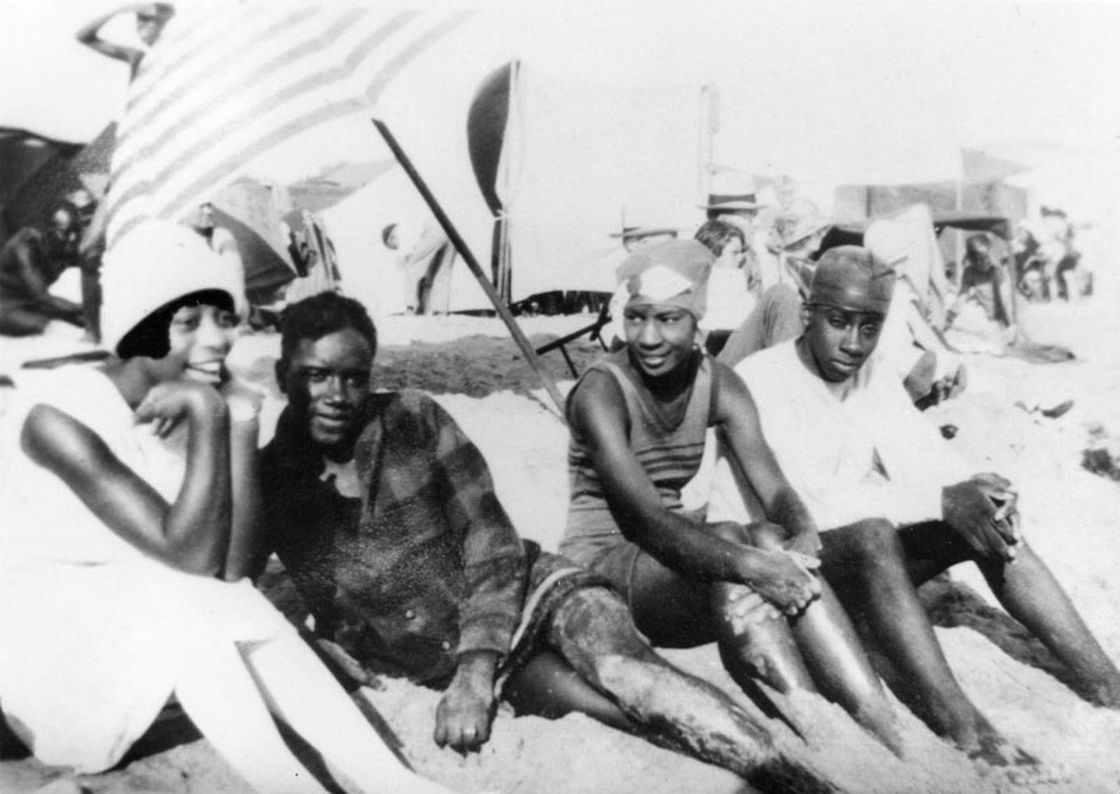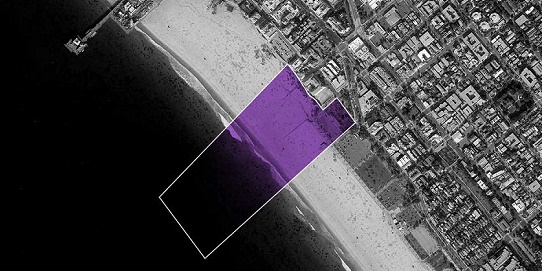 Malibu's Francesca Seely just got two of her surfboards stolen from her house. Keep an eye out for them. Any info on them contact her via Instagram: @franksterseely
Malibu's Francesca Seely just got two of her surfboards stolen from her house. Keep an eye out for them. Any info on them contact her via Instagram: @franksterseely
Last Sunday was A Walk On Water's Surf Therapy Event in Malibu. Check out this video recap and photos shot by Alessandro Masciotti.









A woman was sunbathing on the sand at Venice Beach Sunday when she was accidentally run over by a Los Angeles Police Department patrol cruiser.
Los Angeles Fire Department reported the incident occurred at about 2:10 p.m. near 1000 Ocean Front Walk, just off of the boardwalk.
According to reports, police in the vehicle were patrolling the sandy part of the beach and turned their vehicle when they hit someone.
They exited the vehicle and found a 25 to 30-year-old-woman under the SUV cruiser.
Medical personnel on the beach ran to the scene and was able to give first aid before paramedics arrived. The woman was transported to a hospital where she is in stable condition. Police say preliminary reports indicate that the woman has no broken bones or significant internal injuries.

The 9th Annual Life Rolls On Charity Poker Tourney & Casino Lounge is Sunday, May 19 at The Rose Room in Venice Beach. Whether you're a novice or a pro poker player, come on out and raise money for people with disabilities. If poker just isn't your game, you can hang in the Casino Lounge, with a DJ, raffle, hors d'oeuvres and cocktails. Fun for all!
 A paddle out held on Tuesday … at Surfrider Beach .. for Randy Nauert … a Malibu original.
Nauert was never as famous as Dick Dale … but he followed a similar career ark.
The teenaged surfer from the Palos Verdes Peninsula started making music in the surf wave of the early 1960s.
His group was called The Challengers.
Originally known as The Bel-Airs, they were one of the earliest “surf bands,” initially playing school dances and small clubs around Hermosa Beach.
Words from 991KBU
A paddle out held on Tuesday … at Surfrider Beach .. for Randy Nauert … a Malibu original.
Nauert was never as famous as Dick Dale … but he followed a similar career ark.
The teenaged surfer from the Palos Verdes Peninsula started making music in the surf wave of the early 1960s.
His group was called The Challengers.
Originally known as The Bel-Airs, they were one of the earliest “surf bands,” initially playing school dances and small clubs around Hermosa Beach.
Words from 991KBUPhotos from Sandy Sandbakken

A paddle out held on Tuesday , April 16th … at Surfrider Beach .. for Randy Nauert … a Malibu original. Nauert was never as famous as Dick Dale … but he followed a similar career ark.
The teenaged surfer from the Palos Verdes Peninsula started making music in the surf wave of the early 1960s.
His group was called The Challengers.
Originally known as The Bel-Airs, they were one of the earliest “surf bands,” initially playing school dances and small clubs around Hermosa Beach.
In January 1963 they released “Surfbeat” …. it became a massive hit and helped put the surf rock genre on the map.
Nauert moved to Malibu … his T V show Wave Watch was a staple on malibu public access television for 104 episodes.
Nauert lived in Encinal Canyon … he was a familiar sight in his Arson Watch van around Malibu.
His compound burned in the Woolsey Fire … he suffered a heart attack while clearing land two months after the fire.
At the paddle out … his longtime friend and TV show associate Peter Townsend said it was the fire.
“I would think that those fires had an effect on Randy. Because t was his nature to help everybody. And every time you would see a photo on Facebook, he loved his Facebook, there would see a photo of him helping somebody. You know Randy was in his 70s now. And he was up there clearing properties, and friggin’ treating them as if he was a teenager. And I’m sure that didn’t help him when he finally has a heart attack.”
Randy Nauert was eulogized by his longtime friend … John Mazza.
“He really was the spirit of Malibu.”





Randy's band still has their music on Amazon:
A stretch of Santa Monica Beach that was once a gathering place for black Angelenos could find a spot on the National Register of Historic Places.
That's the goal of black heritage activists who are gearing up for their next step in the drive to designate the 55-acre site near the end of Pico Boulevard once derogatorily known as “The Inkwell.”
By Jorge Casuso

From left: Grace Williams, Albert Williams, Mary Mingleton, Willie Williams (no relation) in the segregated section of Santa Monica beach known as the Ink Well ca. 1926 (Shades of L.A. Collection, Los Angeles Public Library)
A stretch of Santa Monica Beach that was once a gathering place for black Angelenos could find a spot on the National Register of Historic Places.
That's the goal of black heritage activists who are gearing up for their next step in the drive to designate the 55-acre site near the end of Pico Boulevard once derogatorily known as “The Inkwell.”
On May 8, California’s State Historical Resources Commission will review the nomination at its quarterly meeting in Palm Springs, activists said.
The Bay Street Beach Historic District, according to a draft of the National Register application, is "a rare example of an African American seaside recreation and leisure site as well as a community cultural focusing point."
Alison R. Jefferson, a prominent black historian who is co-sponsoring the application, said the designation makes "the history of the African American experience in the region more visible."
She is urging supporters to help by writing letters backing the nomination that are due on Tuesday, April 23. For instructions click here .
The designation -- which "aligns with the goals" of the California Coastal Commission’s landmark environmental justice policy adopted in March -- provides "a little more symbolic equity and social justice for all," Jefferson said,
The nomination's co-sponsor, Sea of Clouds, a nonprofit that focuses on preserving coastal places, says "The Inkwell" represents a part of the Jim Crow era that should not be forgotten.
“As much as beach recreation and sport are indelible parts of California’s identity, so too must be its history of exclusion in these public spaces," said Michael Blum, the organization's executive director.
"A National Register listing will work in service of the personal stories, remembrances, and connections to the Bay Street beach area, as it sits within a changing city, coastline, and climate.”
The Bay Street Beach Historic District became an extension of Santa Monica's black community and a destination for blacks living in Los Angeles shortly after the turn of the 20th Century.
The "period of significance" begins in 1908 when the Phillips Chapel Colored Methodist Episcopal Church building was purchased from the Santa Monica School District and relocated to the corner of Fourth and Bay Streets, according to the application.
The church became "an anchor for local African American spiritual and community life," the application said.
Soon, the beach just four blocks away became a haven for black beachgoers, who "faced exclusion, harassment, even violence" in other coastal areas.
The period ends in 1965 with the passage of the federal Voting Rights Act (VRA), which along with the Civil Rights Act of 1964, ended "an era of de jure discrimination and segregation," the application said.
If the Bay Street Beach Historic District makes it on to the National Register, it would join an estimated 8 percent of the 93,000 properties and 1.4 million individual resources that represent women and minorities
The designation would help to better represent "the breadth of the American story," Jefferson said.

A stretch of Santa Monica Beach that was once a gathering place for black Angelenos could find a spot on the National Register of Historic Places.
That's the goal of black heritage activists who are gearing up for their next step in the drive to designate the 55-acre site near the end of Pico Boulevard once derogatorily known as “The Inkwell.”
On May 8, California’s State Historical Resources Commission will review the nomination at its quarterly meeting in Palm Springs, activists said.

The Bay Street Beach Historic District, according to a draft of the National Register application, is "a rare example of an African American seaside recreation and leisure site as well as a community cultural focusing point."
Alison R. Jefferson, a prominent black historian who is co-sponsoring the application, said the designation makes "the history of the African American experience in the region more visible."
She is urging supporters to help by writing letters backing the nomination that are due on Tuesday, April 23. For instructions click here .
The designation -- which "aligns with the goals" of the California Coastal Commission’s landmark environmental justice policy adopted in March -- provides "a little more symbolic equity and social justice for all," Jefferson said,
The nomination's co-sponsor, Sea of Clouds, a nonprofit that focuses on preserving coastal places, says "The Inkwell" represents a part of the Jim Crow era that should not be forgotten.
“As much as beach recreation and sport are indelible parts of California’s identity, so too must be its history of exclusion in these public spaces," said Michael Blum, the organization's executive director.
"A National Register listing will work in service of the personal stories, remembrances, and connections to the Bay Street beach area, as it sits within a changing city, coastline, and climate.”
The Bay Street Beach Historic District became an extension of Santa Monica's black community and a destination for blacks living in Los Angeles shortly after the turn of the 20th Century.
The "period of significance" begins in 1908 when the Phillips Chapel Colored Methodist Episcopal Church building was purchased from the Santa Monica School District and relocated to the corner of Fourth and Bay Streets, according to the application.
The church became "an anchor for local African American spiritual and community life," the application said.
Soon, the beach just four blocks away became a haven for black beachgoers, who "faced exclusion, harassment, even violence" in other coastal areas.
The period ends in 1965 with the passage of the federal Voting Rights Act (VRA), which along with the Civil Rights Act of 1964, ended "an era of de jure discrimination and segregation," the application said.
If the Bay Street Beach Historic District makes it on to the National Register, it would join an estimated 8 percent of the 93,000 properties and 1.4 million individual resources that represent women and minorities
The designation would help to better represent "the breadth of the American story," Jefferson said.

The Malibu surfer who Sean Penn based his "Fast Times at Ridgemont High" character on has no idea he was the inspiration for Jeff Spicoli.
Subscribe to:
Posts
(
Atom
)





Social Buttons